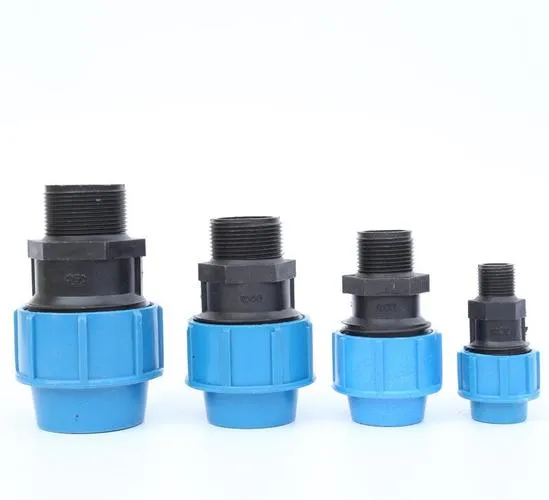Dec . 25, 2024 00:38 Back to list
HDPE to PVC Pipe Connection Solutions from Leading Manufacturers and Suppliers
Connecting HDPE to PVC Pipes An Overview of Manufacturer Solutions
In the world of plumbing and irrigation, the choice of pipe materials plays a vital role in ensuring durability, efficiency, and cost-effectiveness. Among the popular materials, High-Density Polyethylene (HDPE) and Polyvinyl Chloride (PVC) stand out for their advantageous properties. However, situations often arise where these two types of pipes need to be connected. This article explores the connection solutions offered by manufacturers for HDPE to PVC pipe transitions.
Understanding the Materials
HDPE is renowned for its high strength-to-density ratio, providing exceptional resistance to impact, chemicals, and environmental stress. It is commonly used in a variety of applications, including water distribution, sewer systems, and industrial pipelines. Conversely, PVC is lighter, typically less expensive, and easy to install, making it a preferred choice for residential plumbing, irrigation, and drainage systems.
The Need for Connection
While both HDPE and PVC pipes serve distinct purposes, there are scenarios where a connection between the two is necessary. For instance, in a municipality's water infrastructure, an existing system may utilize PVC piping that needs expansion or repair, potentially requiring the integration of newer HDPE piping. Similarly, agricultural settings may demand flexibility in switching between pipe types to adapt to changing needs.
Connection Challenges
Connecting HDPE and PVC pipes is not without its challenges. The two materials have different expansion rates, chemical compositions, and joining methods. HDPE pipes are typically joined using heat fusion, while PVC pipes are commonly joined with solvent cement or mechanical fittings. These differences necessitate careful consideration of the connection method to ensure a secure and leak-proof joint.
hdpe pipe to pvc pipe connection manufacturer

Manufacturer Solutions
Recognizing the need for effective and reliable methods to connect HDPE and PVC, various manufacturers offer specialized solutions. These solutions typically include
1. Transition Fittings Many manufacturers produce transition fittings designed specifically for connecting HDPE and PVC pipes. These fittings often feature one end designed for HDPE connections, employing methods like electrofusion or butt fusion, and the other end tailored for PVC connections, utilizing solvent welding. Transition fittings ensure a secure and leak-proof joint while accommodating the different joining methods of each material.
2. Mechanical Couplings Another viable solution includes using mechanical couplings, which can connect pipes made of differing materials without compromising integrity. These couplings are often adjustable, allowing for ease of installation and alignment between the pipes. Mechanical couplings are suitable for both above and below-ground applications, providing flexibility in various environments.
3. Flanged Connections Flanged connections can also be employed to join HDPE and PVC pipes. By using flange adapters or flanges specifically designed for each material, manufacturers facilitate a robust and removable connection. This option is particularly advantageous for applications requiring maintenance access, allowing for easier disassembly if needed.
4. Protocol and Standards Manufacturers often adhere to industry standards and protocols when designing connection solutions. These standards ensure that connections maintain structural integrity and perform well under pressure and environmental conditions. By following guidelines set forth by organizations such as ASTM or ISO, manufacturers guarantee that their products meet rigorous safety and performance criteria.
Conclusion
The connection between HDPE and PVC pipes is paramount in various industrial, municipal, and agricultural applications. With the right manufacturer solutions, these connections can be made efficiently and reliably. Transition fittings, mechanical couplings, and flanged connections all offer valuable options that address the unique challenges posed by the differences in materials. By choosing the appropriate connection method and collaborating with reputable manufacturers, engineers and contractors can ensure the longevity and durability of their piping systems, ultimately leading to more sustainable and effective operations. Whether for water distribution, drainage, or agricultural uses, bridging the gap between HDPE and PVC is an achievable goal that enhances infrastructure resilience.
-
Flexible 32mm HDPE Pipes in Coil - Durable & Easy Install
NewsAug.18,2025
-
HDPE Sprinkler Pipe Manufacturers - Quality & Durable Solutions
NewsAug.17,2025
-
Durable DN100 PVC Well Casing Pipes for Reliable Water Supply
NewsAug.16,2025
-
HORON 25mm PPR Plumbing Pipes: Durable, Leak-Proof Water Systems
NewsAug.15,2025
-
Durable UPVC Column Pipes for Submersible Pumps | Efficient Water Flow
NewsAug.14,2025
-
DN100 PVC Well Casing Pipes - Durable & Corrosion-Resistant
NewsAug.13,2025

